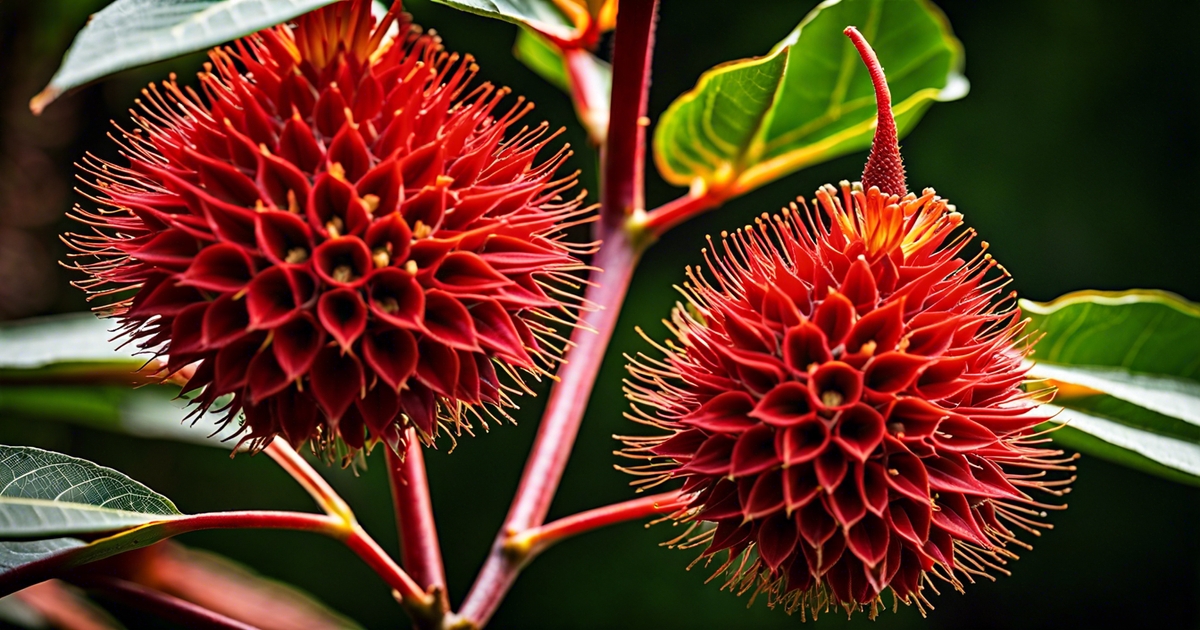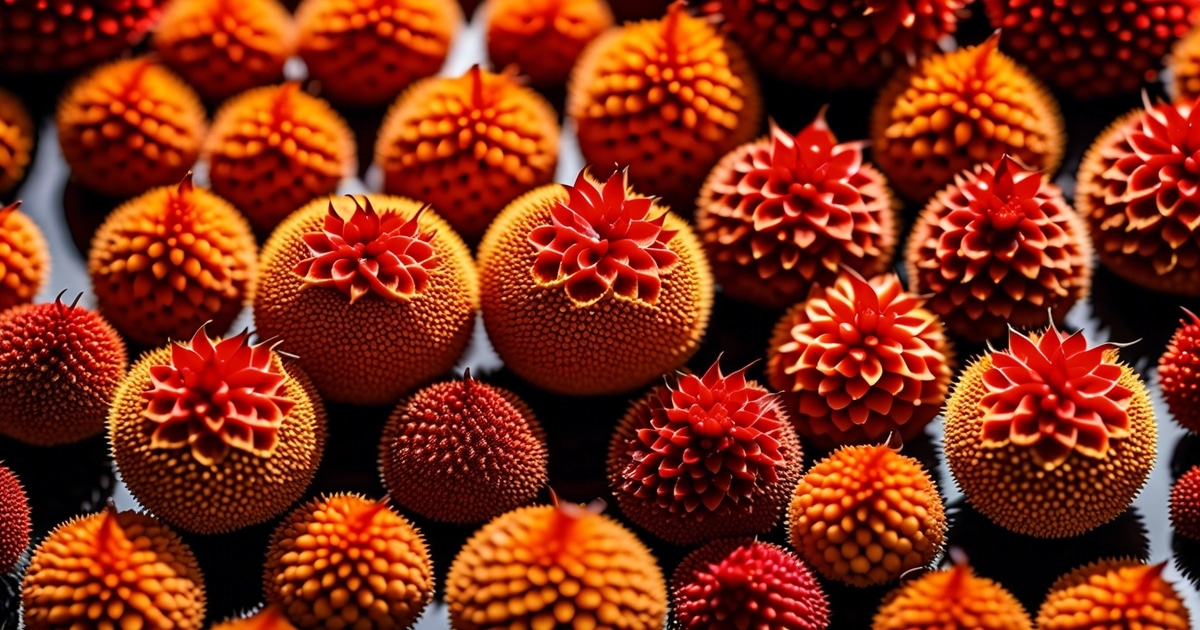Key Takeaways
- Pay attention to food labels and ingredients to avoid annatto if you suspect an allergy.
- Consult a healthcare professional if you experience symptoms like hives, itching, or gastrointestinal issues after consuming annatto products.
- Annatto allergies are less common than other food allergies but can still occur.
- Seek medical advice for proper diagnosis through skin or blood tests if you suspect an annatto allergy.
- Manage annatto allergies by eliminating products containing annatto from your diet and exploring alternative options.
- Be aware of potential cross-reactivity between annatto and other allergens, leading to similar allergic reactions.
Are you constantly vigilant about what you eat due to annatto allergies? Wondering how to navigate daily life with this dietary restriction? Stay tuned for valuable insights and practical tips on managing annatto allergies effectively. From deciphering food labels to discovering safe alternatives, we’ve got you covered.
Annatto Uses in Food Products
Common Food Products
- Cheddar cheese
- Butter
- Dairy products
- Cereal
Annatto, a natural coloring agent derived from the seeds of the achiote tree, plays a crucial role in enhancing the appearance of various food items. Its vibrant reddish-orange hue is commonly used to give foods an appealing color, making them more visually attractive to consumers.
Enhancing Appearance
The vivid color provided by Annatto helps make products like cheddar cheese and butter more appealing on store shelves. It adds an aesthetically pleasing touch to dairy products and cereals, enticing consumers with its rich and warm tones.
Versatility in Savory and Sweet Dishes
Annatto’s versatility extends beyond savory dishes, often used in marinades, soups, and stews for color enhancement and flavor infusion. In sweet treats like desserts and baked goods, annatto can also be incorporated to add a pop of color without altering the taste significantly.
Identifying Annatto Allergy Symptoms
Skin Reactions
Hives, itching, and rashes are common skin-related symptoms of an annatto allergy. These reactions typically appear shortly after consuming products containing annatto.
Gastrointestinal Symptoms
Individuals with annatto allergies may experience nausea, vomiting, or diarrhea after ingesting foods with this additive. These symptoms can vary in severity from mild discomfort to more pronounced reactions.
Respiratory Issues
Respiratory symptoms like wheezing or shortness of breath may occur due to an allergic reaction to annatto. These signs necessitate immediate medical attention.
Cross-Reactivity
People allergic to certain substances like latex or certain tree nuts might also experience allergic reactions to annatto due to cross-reactivity. Individuals with known allergies must be cautious when consuming products containing annatto.
Prevalence of Annatto Allergies

Global Statistics
Annatto allergies are relatively rare compared to other food dye allergies. However, they can still affect a significant number of individuals worldwide. The prevalence of annatto allergies is estimated to be around 1% among the general population.
Demographic Patterns
Studies have shown that annatto allergies can occur in both children and adults, with no specific age group being more susceptible. Interestingly, there seems to be a slightly higher prevalence of annatto allergies in females compared to males.
Rising Trends
In recent years, there has been a noticeable increase in reported cases of annatto allergies. This rise could be attributed to various factors such as increased awareness, better diagnostic techniques, and changes in dietary habits. It’s important for individuals with suspected annatto allergies to seek medical advice for proper diagnosis and management.
Diagnosing Annatto Allergies
Skin Prick Tests
Skin prick tests involve placing a small amount of annatto extract on the skin’s surface to check for allergic reactions. The allergist then observes the skin for signs of redness, swelling, or itching.
Blood Tests
Blood tests, such as specific IgE blood tests, measure the levels of antibodies produced in response to annatto exposure. These tests help identify if the body has developed an immune response to annatto.
Consulting an Allergist
Consulting an allergist is crucial for accurate diagnosis and management of annatto allergies. Allergists specialize in identifying and treating various allergies, including those related to food additives like annatto.
- Pros:
- Professional guidance in diagnosing and managing annatto allergies.
- Access to specialized diagnostic tools and expertise for accurate results.
- Cons:
- Costs associated with medical consultations and diagnostic tests.
- Waiting times for appointments with allergists may vary depending on location.
Seeking professional medical advice from an allergist can provide individuals with tailored treatment plans based on their specific allergy profile. Remember that self-diagnosis or avoidance strategies without proper testing can lead to unnecessary dietary restrictions or overlooked underlying health issues.
Managing Annatto Allergies
Avoidance Strategies
Individuals with annatto allergies should meticulously check food labels to steer clear of this allergen. Choose products labeled “annatto-free” to prevent any adverse reactions.
Consumers can also prepare meals at home from scratch, ensuring complete control over ingredients and avoiding hidden sources of annatto. Consider using natural coloring alternatives like turmeric or paprika in recipes.
Alternative Ingredients
For those sensitive to annatto, exploring alternative food options is crucial. Select unprocessed foods such as fresh fruits, vegetables, meats, and grains to minimize exposure to annatto derivatives.
When selecting packaged goods, look for substitutes without annatto, such as saffron or beet juice powder. These alternatives provide color without triggering allergic responses.
Cross-Reactivity with Other Allergens

Common Allergens
Individuals with annatto allergies may also react to common allergens such as nuts, shellfish, and soy. These allergens share similar proteins, leading to cross-reactivity in some individuals.
Understanding Cross-Reactivity
Cross-reactivity occurs when the immune system mistakes similar proteins in different substances as the same, triggering an allergic response. This phenomenon can complicate allergy management as individuals may need to avoid multiple allergens.
Implications for Allergy Management
For those with annatto allergies, understanding cross-reactivity is crucial. It means that even seemingly unrelated foods or substances could trigger allergic reactions due to shared protein structures. Proper identification and avoidance of cross-reactive allergens are essential for managing allergies effectively.
Examples of Trigger Substances
Apart from annatto, other spices like cumin and additives such as certain food colorings containing similar compounds can lead to allergic reactions in individuals sensitive to annatto. By being aware of potential triggers through cross-reactivity, individuals can better navigate their dietary choices and prevent adverse symptoms.
Understanding Food Labeling Laws
Disclosure Requirements
Food labeling laws in the United States mandate that certain foods containing annatto must be clearly labeled. Manufacturers are required to list annatto as an ingredient on the packaging.
Annatto is commonly found in various snack foods, dairy products, and cosmetics. This allergen must be disclosed to ensure individuals with sensitivities can make informed choices.
Enforcement Challenges
Despite these regulations, enforcing food labeling laws poses significant challenges. Manufacturers may not always accurately label products, leading to potential risks for allergy-conscious consumers.
One major loophole is the use of generic terms like “natural flavors” or “colorings,” which can mask the presence of annatto. This lack of specificity makes it difficult for consumers to identify and avoid allergens effectively.
Impact on Allergy Management
For individuals managing annatto allergies, navigating food labels becomes a crucial aspect of daily life. Conducting a food challenge under medical supervision may be necessary to confirm sensitivity due to potential hidden sources in processed foods.
Consumers are advised to stay vigilant and read labels meticulously, seeking manufacturer clarification to prevent allergic reactions.
Final Remarks
Now that you better understand annatto allergies, you can confidently identify symptoms, seek a proper diagnosis, and manage reactions effectively. Awareness of cross-reactivity with other allergens and understanding food labeling laws will empower you to make informed choices. Remember, your well-being is paramount, so always prioritize your health by staying informed and taking necessary precautions. By staying vigilant and proactive, you can easily navigate annatto allergies and lead a healthier lifestyle.
Remember, knowledge is power. Stay informed, consult healthcare professionals when needed, and read food labels carefully. Your health matters, so take charge of it today!
Frequently Asked Questions
What are the common uses of annatto in food products?
Annatto is commonly used in food products as a natural colorant to give a yellow or orange hue. It is found in cheese, butter, snacks, and processed foods.
How can I identify the symptoms of an annatto allergy?
Symptoms of an annatto allergy may include hives, itching, swelling, digestive issues, and respiratory problems. If you suspect an allergic reaction after consuming foods containing annatto, consult a healthcare provider.
Is annatto allergy prevalence high among the population?
Annatto allergies are considered rare compared to other food allergies. However, individuals with sensitivities to certain additives or existing allergies may be at higher risk.
How do medical professionals diagnose annatto allergies?
Medical professionals diagnose annatto allergies through skin prick tests, blood tests for specific antibodies (IgE), and elimination diets where annatto-containing foods are avoided.
What are some tips for managing annatto allergies on a daily basis?
Managing an annatto allergy involves reading food labels carefully, avoiding products with sensitive annatto derivatives, and carrying emergency medication like epinephrine if necessary. Consultation with allergists is recommended for personalized guidance.
Can individuals allergic to other substances experience cross-reactivity with annatto?
Cross-reactivity between annatto and other allergens like latex or certain fruits is possible due to shared protein structures. Individuals with known sensitivities should be cautious and seek medical advice regarding potential cross-reactions.
How do food labeling laws help consumers navigate products containing annattos?
Food labeling laws require manufacturers to list ingredients like “annatto” on product packaging clearly. This helps consumers easily identify whether a product contains this additive and make informed choices based on their dietary needs or allergen concerns.

